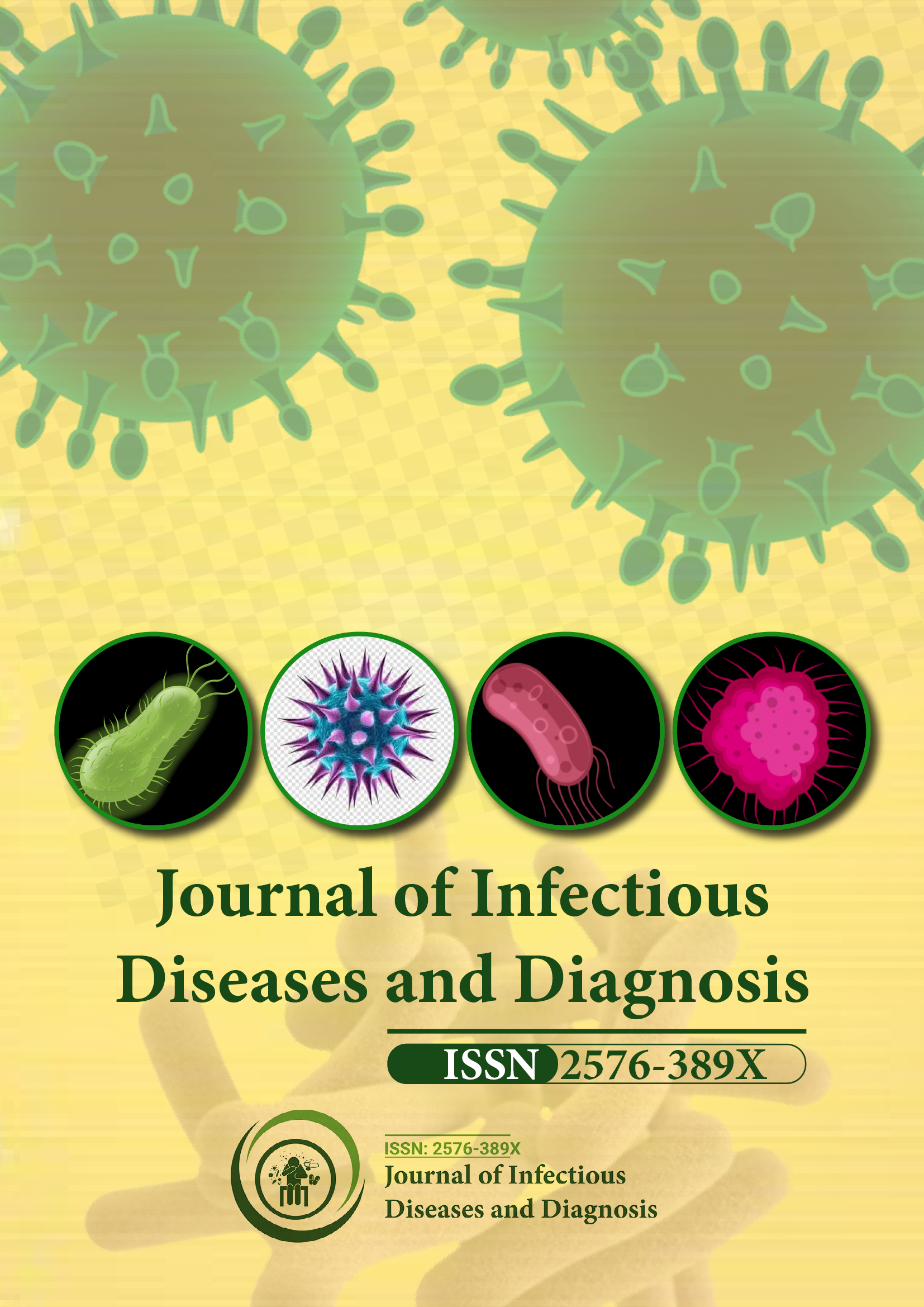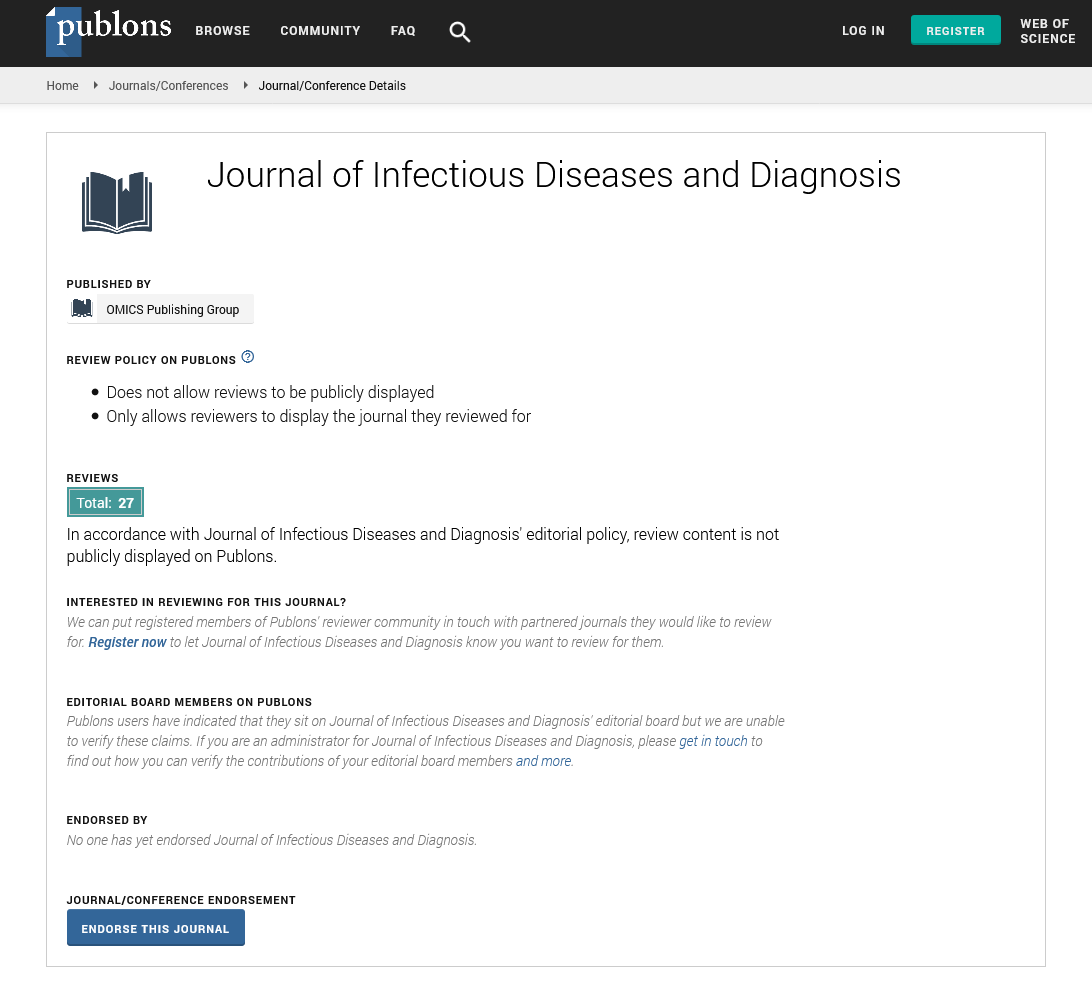Indexed In
- RefSeek
- Hamdard University
- EBSCO A-Z
- Publons
- Euro Pub
- Google Scholar
Useful Links
Share This Page
Journal Flyer

Open Access Journals
- Agri and Aquaculture
- Biochemistry
- Bioinformatics & Systems Biology
- Business & Management
- Chemistry
- Clinical Sciences
- Engineering
- Food & Nutrition
- General Science
- Genetics & Molecular Biology
- Immunology & Microbiology
- Medical Sciences
- Neuroscience & Psychology
- Nursing & Health Care
- Pharmaceutical Sciences
Perspective - (2023) Volume 8, Issue 1
Additional Benefits of Non-Pharmaceutical Interventions for COVID-19 in Combating Infectious Diseases
John Lin*Received: 02-Jan-2023, Manuscript No. JIDD-23-20472; Editor assigned: 04-Jan-2023, Pre QC No. JIDD-23-20472 (PQ); Reviewed: 18-Jan-2023, QC No. JIDD-23-20472; Revised: 25-Jan-2023, Manuscript No. JIDD-23-20472 (R); Published: 01-Feb-2023, DOI: 10.35248/2576-389X.23.08.198
About the Study
The COVID-19 pandemic has created a unique opportunity to understand the impact of Non-Pharmaceutical Interventions (NPIs) against infectious diseases. These interventions, such as social distancing, wearing masks, and hand hygiene, have been implemented globally to slow the spread of COVID-19, but they also have the potential to prevent the transmission of other infectious diseases. This commentary will analyze the co-benefits of NPIs against COVID-19 on infectious diseases.
Reduction of other respiratory infections: NPIs such as social distancing and wearing masks can reduce the transmission of other respiratory infections, such as the flu, by reducing the exposure to respiratory droplets from infected individuals. In addition, the increased use of hand hygiene, particularly hand washing, can help to prevent the spread of other respiratory viruses, including rhinovirus, the common cold, and Respiratory Syncytial Virus (RSV), which commonly cause respiratory illness in children.
Decreased antibiotic resistance: The implementation of NPIs can also help to decrease the development of antibiotic resistance by reducing the exposure to bacteria and viruses that can lead to the development of resistant strains. By reducing the spread of infectious diseases, NPIs can reduce the need for antibiotics and slow the development of resistance to these important drugs.
Improved air quality: NPIs, such as reducing transportation and industrial activity, can also have a positive impact on air quality. The reduction in emissions from transportation and industry can improve the air quality, reducing exposure to pollutants that can have negative effects on respiratory and cardiovascular health.
Increased physical activity: The implementation of NPIs, such as closing of certain public spaces, can also encourage individuals to engage in physical activity, such as walking, running, and cycling. This increased physical activity can have positive impacts on cardiovascular and overall health, reducing the risk of chronic diseases, such as heart disease and diabetes.
Improved mental health: NPIs can also have a positive impact on mental health by reducing the stress and anxiety associated with infectious diseases. By reducing the spread of infectious diseases, NPIs can create a sense of security, reducing the fear and anxiety associated with the spread of disease.
Improved health care system efficiency: NPIs can also improve the efficiency of the health care system by reducing the number of patients seeking care for infectious diseases. This reduction in demand for care can free up resources, allowing healthcare providers to focus on other areas of care, such as chronic disease management.
Improved economic outcomes: The implementation of NPIs can also have positive economic impacts, reducing the costs associated with treating infectious diseases and improving overall economic outcomes. By reducing the spread of infectious diseases, NPIs can reduce the number of individuals requiring medical care and reduce the costs associated with treating these diseases.
Conclusion
The COVID-19 pandemic has created a unique opportunity to understand the impact of NPIs against infectious diseases. These interventions have the potential to prevent the transmission of other infectious diseases, reduce antibiotic resistance, improve air quality, increase physical activity, improve mental health, improve the efficiency of the health care system, and improve economic outcomes. By implementing NPIs, we can not only slow the spread of COVID-19, but also improve the overall health and wellbeing of communities.
Citation: Lin J (2023) Additional Benefits of Non-Pharmaceutical Interventions for COVID-19 in Combating Infectious Diseases. J Infect Dis Diagn. 8:198.
Copyright: © 2023 Lin J. This is an open-access article distributed under the terms of the Creative Commons Attribution License, which permits unrestricted use, distribution, and reproduction in any medium, provided the original author and source are credited.

